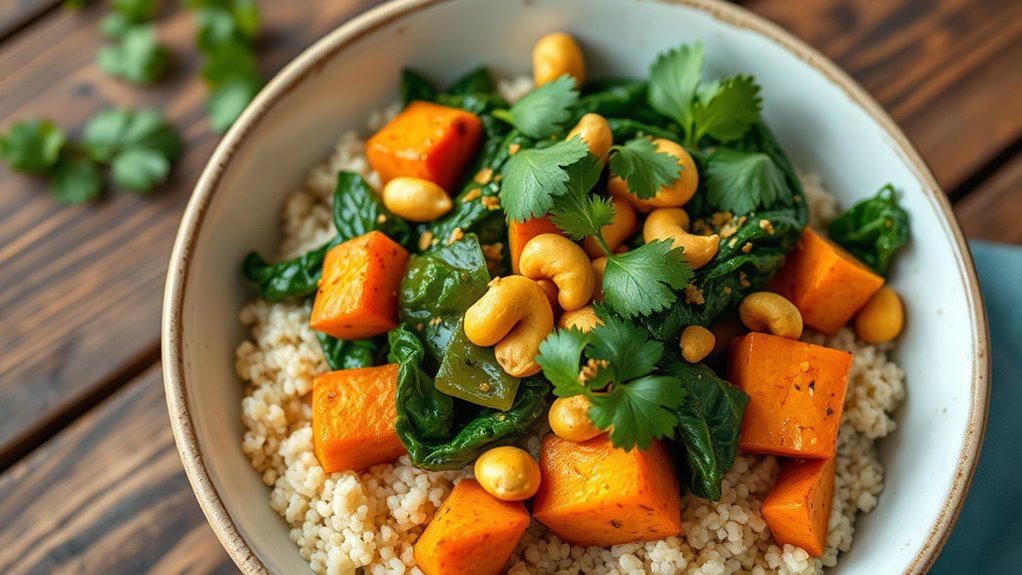My Favorite Anti-Inflammatory Bowl for Busy Weeknights
The Benefits of an Anti-Inflammatory Diet
When you choose an anti-inflammatory diet, you’re not just making a meal choice; you’re investing in your overall health.
Research shows that this diet can reduce chronic inflammation, lower the risk of diseases, and improve your energy levels. An anti-inflammatory recipe often includes colorful vegetables, healthy fats, and whole grains, making it easier to nourish your body and feel your best on busy weeknights. Additionally, incorporating easy-to-make recipes into your meals can help you maintain this dietary approach without feeling overwhelmed.
Essential Ingredients for Your Bowl
Creating a nutritious anti-inflammatory bowl starts with selecting the right ingredients.
Begin with a base of whole grains like quinoa or brown rice.
Add colorful vegetables such as spinach, bell peppers, and carrots for essential nutrients.
Incorporate healthy fats from avocado or nuts, and complete it with a protein source like grilled chicken or chickpeas.
This combination promotes a balanced, anti-inflammatory meal. Including a variety of colorful vegetables not only enhances the flavor but also maximizes the health benefits of your dish.
Step-by-Step Recipe Guide
To make your anti-inflammatory bowl, start by gathering all your ingredients to streamline the cooking process.
Begin by cooking your grains according to package instructions. While they cook, sauté your chosen vegetables and spices until tender.
Combine everything in a bowl, adding a protein of your choice. Drizzle with a healthy fat like olive oil, and enjoy your nutrient-packed meal! Including delicious anti-inflammatory salads can elevate the flavors and nutritional value of your bowl.
Customizing Your Anti-Inflammatory Bowl
While it’s important to stick to anti-inflammatory ingredients, customizing your bowl allows you to tailor the flavors and nutrients to your taste and health needs.
Experiment with different base grains like quinoa or farro, incorporate a variety of colorful veggies, and add protein sources such as grilled chicken or chickpeas.
Don’t forget to drizzle with healthy fats like olive oil or avocado for extra benefit. Additionally, consider including omega-3 rich foods like walnuts or fatty fish to further enhance your bowl’s anti-inflammatory effects.
Tips for Meal Prep and Storage
Meal prepping your anti-inflammatory bowl can save time and ensure you have nutritious options ready throughout the week. Try batch-cooking grains and proteins, and chop veggies in advance. Use airtight containers for storage and label them with dates. Here’s a practical table to help you plan your prep:
| Item | Storage Method |
|---|---|
| Cooked Quinoa | Airtight container |
| Chopped Veggies | Ziplock bags |
| Grilled Chicken | Glass container |
| Dressing | Small jar |

